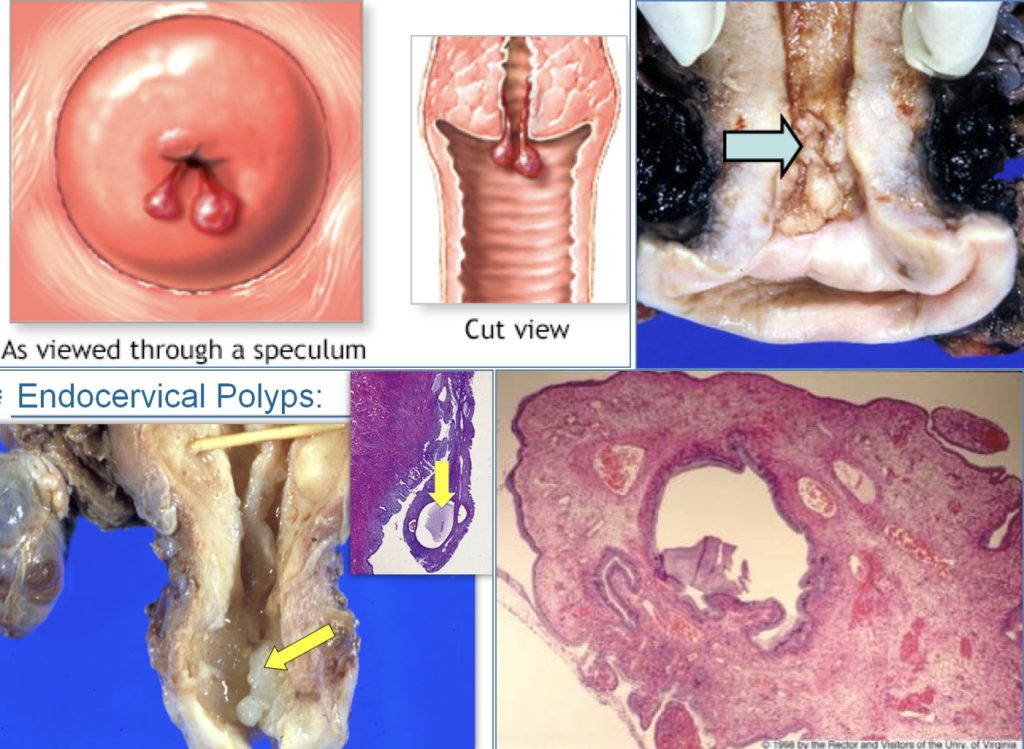Table of Contents
Overview – Endocervical Polyps
Endocervical polyps are benign inflammatory growths that arise from the endocervical canal and are most commonly seen in peri-menopausal, parous women. These polyps may present with irregular or heavy menstrual bleeding and post-coital spotting, and while they can appear alarming on examination, they are almost always benign and easily managed with minor surgical intervention.
Definition
Endocervical polyps are benign inflammatory tumours that arise from the mucosa of the endocervical canal, commonly composed of fibrous stroma and endocervical glands.
Aetiology
- Unknown exact cause
- Likely inflammatory in origin
Pathogenesis
- Chronic inflammation of the cervical mucosa
→ Hyperplasia of endocervical glands
→ Overgrowth into a finger-like inflammatory polyp
Morphology
Macroscopic
- Finger-like, mucoid, red/purple polyps
- Usually <1 cm in diameter
- May be visible protruding from the cervical canal during pelvic examination
Microscopic
- Overgrowth of benign fibrous stroma with glandular elements
- Lined by squamous epithelium

Clinical Features
- Demographic: Typically peri-menopausal women, especially those who have had children
- Symptoms:
- Irregular intermenstrual bleeding
- Heavy menstrual bleeding (menorrhagia)
- Post-coital bleeding
Investigations
- Pelvic examination: May reveal visible red/purple projection from cervical os
- Cervical biopsy: Confirms benign nature and rules out malignancy
Management
- Simple surgical excision of the polyp
- Strangulation and cauterisation of the polyp base to prevent recurrence
Prognosis
- 99% benign
- Recurrence is rare following complete excision
- Malignant transformation is extremely rare
Summary – Endocervical Polyps
Endocervical polyps are benign inflammatory outgrowths from the cervical canal, often presenting with irregular, heavy, or post-coital bleeding. Diagnosis is clinical and confirmed with biopsy. Simple surgical removal is curative in most cases. For more, visit our Reproductive Health Overview page.